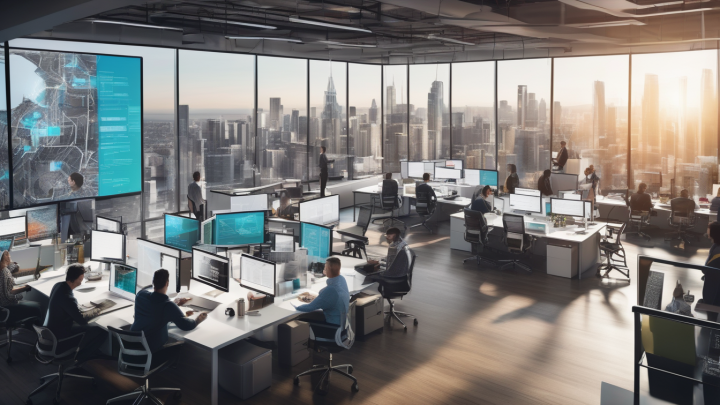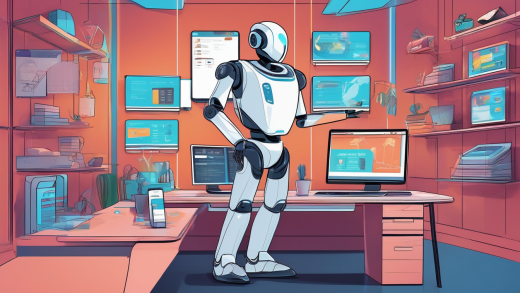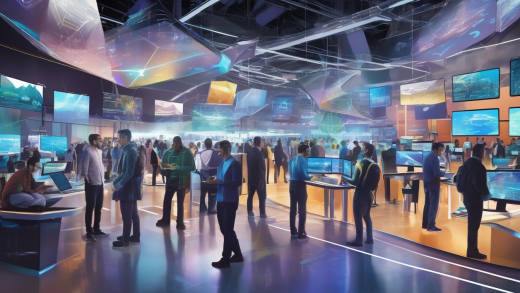Artificial Intelligence (AI) is not just a buzzword; it’s a game-changer that’s shaking up the job market in ways we never imagined. As we dive into this digital revolution, it’s crucial to understand how AI is transforming our workplaces, creating opportunities, and presenting challenges that we must navigate carefully. Think of AI as a double-edged sword—it can slice through inefficiencies and open doors to innovation, but it can also cut away at traditional job roles, leaving many to wonder about their future.
At its core, AI refers to computer systems designed to mimic human intelligence, learning from data and making decisions. Today, AI applications are popping up in various industries, from finance to retail to healthcare. This transformation is reshaping job roles and responsibilities, paving the way for exciting new opportunities. For instance, in the manufacturing sector, robots are taking over repetitive tasks, allowing human workers to focus on more strategic roles that require creativity and critical thinking.
Despite the fears surrounding job loss, AI technology is creating new job categories and enhancing productivity. This leads to economic growth and improved job satisfaction across various sectors. Imagine a world where mundane tasks are automated—workers can then devote their time to more fulfilling and impactful work. This shift not only boosts morale but also sparks innovation, as employees are encouraged to think outside the box and contribute to their organizations in new ways.
As AI continues to evolve, it’s giving rise to entirely new industries. These emerging sectors are creating jobs that require unique skill sets, offering innovative career paths for workers. For example, the demand for AI specialists, data scientists, and cybersecurity experts is skyrocketing. The challenge lies in ensuring that the current workforce is equipped with the necessary skills to thrive in these roles.
AI is revolutionizing healthcare, leading to job opportunities in areas like data analysis, telemedicine, and personalized medicine. This technological leap is not just about efficiency; it’s about improving patient care and outcomes. With AI’s ability to analyze vast amounts of data, healthcare professionals can make more informed decisions, ultimately benefiting patients and the healthcare system as a whole.
The creative industries are also reaping the benefits of AI tools that enhance content creation, design, and marketing. These advancements are resulting in new roles that blend technology and creativity, such as AI-driven graphic designers and content strategists. This fusion of skills not only enriches the creative process but also opens up a world of possibilities for those willing to adapt.
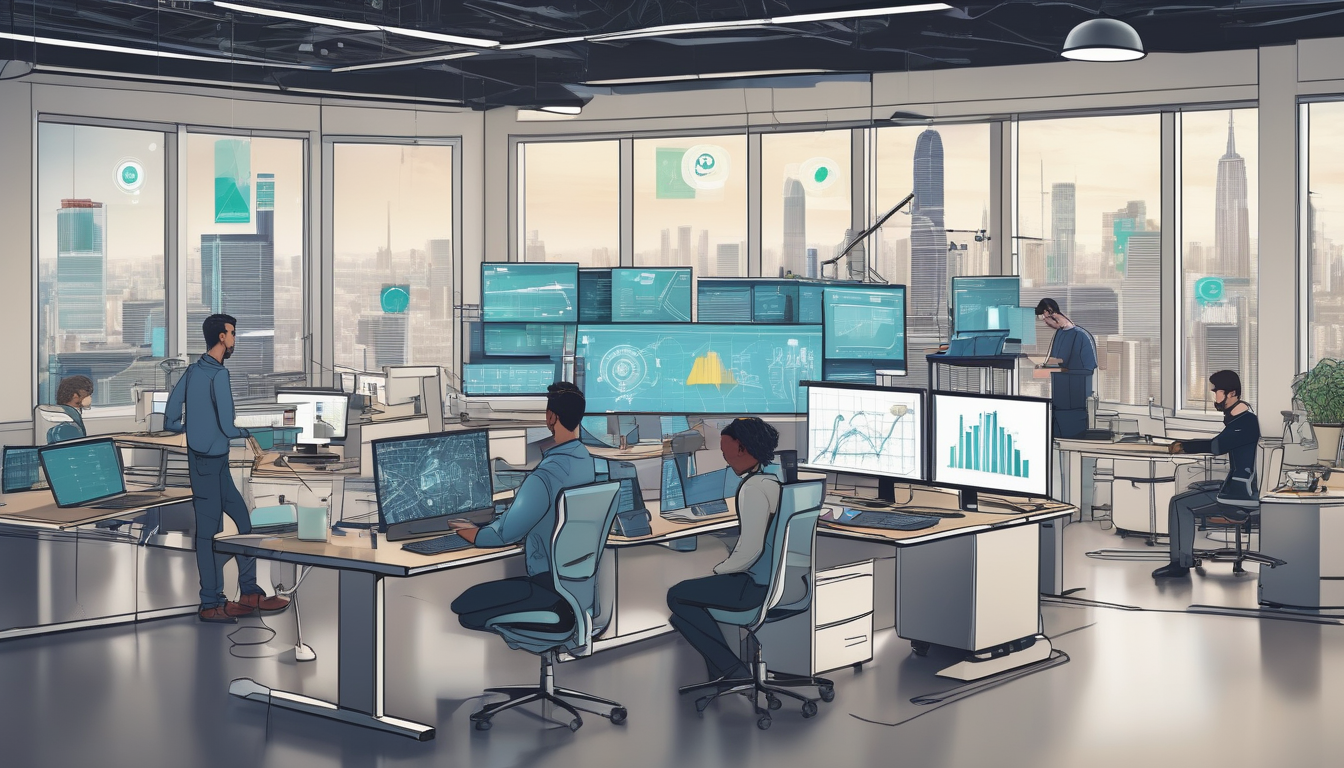
Understanding AI and Its Applications
Artificial Intelligence, or AI, is not just a buzzword; it’s a transformative force reshaping our world. From the way we communicate to how businesses operate, AI is making its mark across various industries. But what exactly is AI? In simple terms, it’s a technology that enables machines to mimic human intelligence, allowing them to learn, reason, and make decisions.
AI has a plethora of applications that are revolutionizing job roles and responsibilities. For instance, in the healthcare sector, AI algorithms analyze vast amounts of data to assist in diagnostics, predict patient outcomes, and even personalize treatment plans. This not only enhances patient care but also creates new job opportunities in data analysis and telemedicine.
Moreover, AI is making waves in the creative industry. Tools powered by AI can assist in creating content, designing graphics, and even optimizing marketing strategies. Imagine a world where a graphic designer collaborates with AI to generate innovative ideas—this is the new norm. With AI handling repetitive tasks, creative professionals can focus more on what they do best: creating.
Here’s a quick look at some key applications of AI across different sectors:
- Finance: AI algorithms detect fraudulent transactions and help in risk assessment.
- Retail: Personalized shopping experiences are enhanced through AI-driven recommendations.
- Transportation: AI is at the heart of autonomous vehicles, optimizing routes and improving safety.
As AI continues to evolve, it paves the way for new opportunities, but it also requires a shift in how we perceive and prepare for the future of work. Embracing AI means understanding its capabilities and limitations, and being ready to adapt to a landscape where human skills and AI capabilities go hand in hand.
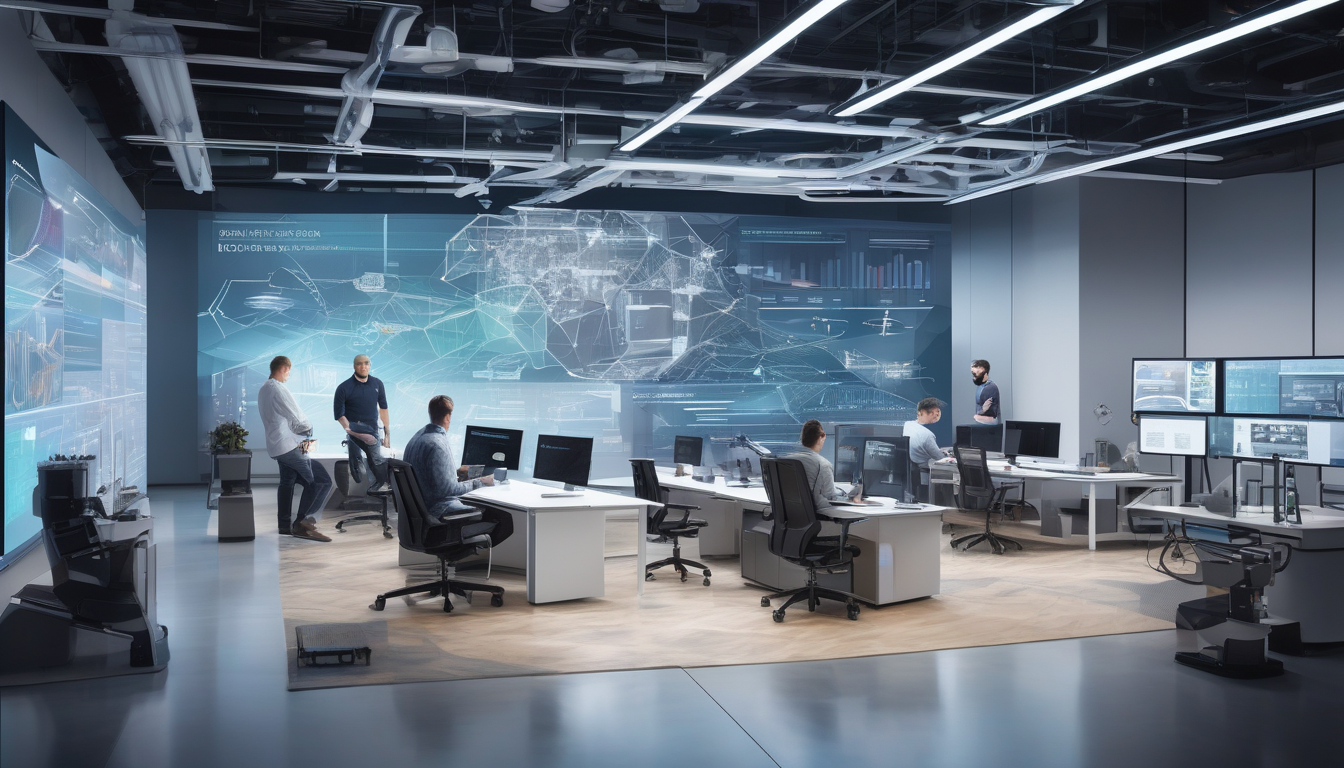
The Positive Impact of AI on Employment
Artificial Intelligence (AI) is not just a buzzword; it’s a game-changer in the employment landscape. As we embrace this technological revolution, it’s essential to recognize the positive impacts AI is having on job markets around the globe. Rather than simply replacing jobs, AI often creates new opportunities and enhances existing roles, leading to a more dynamic workforce.
One of the most significant benefits of AI is its ability to create new job categories. For instance, roles such as AI trainers, data scientists, and robotics engineers are emerging as businesses adopt AI technologies. These positions require unique skill sets, which means there are fresh avenues for career growth. This evolution is akin to the way the internet created jobs that didn’t exist before, like web developers and social media managers.
Moreover, AI enhances productivity across various sectors. By automating repetitive tasks, employees can focus on more strategic and creative aspects of their jobs. For example, in the healthcare sector, AI algorithms can analyze patient data faster than any human, allowing healthcare professionals to spend more time on patient care rather than paperwork. This shift not only improves efficiency but also boosts job satisfaction, as workers can engage in more meaningful activities.
Let’s take a closer look at how AI is transforming specific industries:
| Industry | AI Applications | Job Opportunities |
|---|---|---|
| Healthcare | Data analysis, telemedicine | Data analysts, telehealth coordinators |
| Creative Arts | Content creation, design | AI content creators, digital marketers |
| Manufacturing | Automation, predictive maintenance | Robotics technicians, AI maintenance specialists |
As we can see, the integration of AI not only leads to job creation but also fosters a culture of innovation. Companies that embrace AI are often at the forefront of their industries, driving economic growth and improving the overall job market. The future is bright for those willing to adapt and learn in this exciting era of technological advancement.
Job Creation in Emerging Industries
The rise of artificial intelligence (AI) is not just a buzzword; it’s a transformative force reshaping our job landscape. As industries adapt to this technological wave, we are witnessing the birth of emerging sectors that are creating exciting job opportunities. Think of it like a new frontier in the job market, where traditional roles are evolving and new positions are sprouting up like wildflowers after a rainstorm.
For instance, the tech industry is booming with roles that didn’t exist a decade ago. Positions such as AI ethics compliance officers, data scientists, and machine learning engineers are now essential. These jobs require a unique blend of skills, often combining technical expertise with a deep understanding of ethical implications. It’s fascinating how AI is not only enhancing productivity but also giving rise to entirely new career paths.
Moreover, industries like renewable energy are experiencing a surge in job creation as AI optimizes energy production and consumption. The demand for skilled workers in areas such as solar panel installation and energy management systems is skyrocketing. This shift not only contributes to environmental sustainability but also opens doors for individuals seeking meaningful work.
Here’s a quick look at some of the emerging industries and the job roles they are generating:
| Industry | Job Roles |
|---|---|
| Healthcare | Telehealth Coordinators, AI Health Analysts |
| Finance | Algorithmic Traders, Risk Management Analysts |
| Entertainment | AI Content Creators, Virtual Reality Designers |
In conclusion, the integration of AI into various sectors is not merely a threat to existing jobs; rather, it’s a catalyst for innovation and growth. As we embrace this change, we must remain proactive, equipping ourselves with the skills needed to thrive in these new roles. The future looks bright, and those who are willing to adapt will find themselves at the forefront of this exciting evolution.
Technological Advancements in Healthcare
In recent years, have been nothing short of revolutionary. With the integration of artificial intelligence (AI), the landscape of patient care, diagnosis, and treatment has been transformed, creating a ripple effect that benefits both healthcare professionals and patients alike. Imagine a world where doctors can diagnose diseases with pinpoint accuracy in mere seconds—this is no longer a distant dream but a reality thanks to AI.
One of the most significant changes brought about by AI is the rise of data analysis. Healthcare providers can now analyze vast amounts of patient data to identify trends and predict health outcomes. For instance, AI algorithms can sift through electronic health records to flag potential health risks before they escalate. This proactive approach not only enhances patient care but also reduces healthcare costs.
Moreover, the emergence of telemedicine has been accelerated by AI technologies. Patients can now consult with healthcare providers from the comfort of their homes, making healthcare more accessible than ever. This is particularly beneficial for individuals living in remote areas or those with mobility challenges. Telemedicine platforms often utilize AI to triage patients, ensuring they receive timely care.
Another exciting area is personalized medicine, where AI helps tailor treatments based on individual genetic profiles. This means that rather than a one-size-fits-all approach, patients receive customized treatment plans that are more effective and have fewer side effects. As AI continues to evolve, we can expect even more sophisticated applications in this field.
However, with these advancements come challenges. The integration of AI in healthcare raises questions about data privacy and the ethical use of technology. It is crucial for stakeholders to establish guidelines and frameworks that protect patient information while still reaping the benefits of AI. Overall, the technological advancements in healthcare are paving the way for a brighter future, filled with opportunities for innovation and improved patient outcomes.
AI in the Creative Sector
Artificial Intelligence is making waves in the creative sector, transforming the way artists, designers, and marketers approach their work. Imagine having a tool that not only helps you brainstorm ideas but also enhances your creative output. That’s the magic of AI! From generating unique designs to optimizing marketing strategies, AI is becoming an indispensable partner for creatives.
One of the most exciting applications of AI in the creative realm is in content generation. AI algorithms can analyze trends, audience preferences, and even emotional responses to create tailored content that resonates with viewers. For instance, platforms like Canva and Adobe are integrating AI tools that suggest design elements or layouts based on the user’s previous work. This not only saves time but also inspires new ideas, allowing creatives to push their boundaries.
Moreover, AI is revolutionizing the music industry. With tools like AIVA (Artificial Intelligence Virtual Artist), musicians can compose original scores by simply inputting a few parameters. This capability opens up a world of possibilities, enabling artists to experiment with different styles and genres without the usual constraints. It’s like having a collaborative partner who never runs out of inspiration!
However, the rise of AI in creativity does raise some questions. Will machines replace human creativity? The answer is a resounding no. AI serves as a tool that enhances human creativity rather than replacing it. By automating repetitive tasks, creatives can focus on what they do best—innovating and expressing themselves.
In conclusion, the integration of AI in the creative sector is not just a trend; it’s a revolution. As we embrace these technologies, we will likely see a surge in innovative ideas and creative collaborations that were previously unimaginable. So, whether you’re a designer, writer, or musician, the future is bright, and AI is here to help you shine!
Reskilling and Upskilling the Workforce
As the landscape of work evolves due to the influence of artificial intelligence, the importance of reskilling and upskilling the workforce cannot be overstated. Workers today face an unprecedented challenge: adapting to a world where AI technologies are not just tools but partners in the workplace. This shift demands that employees embrace lifelong learning to stay relevant and competitive. But what does this really mean for the average worker?
To navigate this changing environment, individuals and organizations must prioritize skill development. Reskilling refers to learning new skills to transition into different roles, while upskilling involves enhancing existing skills to improve performance in current positions. Both are crucial strategies to ensure that the workforce can adapt to new job demands created by AI. For instance, a factory worker might need to learn how to operate advanced robotics, while a marketing professional may need to master AI-driven analytics tools.
Organizations that invest in these initiatives not only empower their employees but also create a more agile and innovative workforce. Here are some key benefits of reskilling and upskilling:
- Increased Job Security: Employees who continuously learn are less likely to face job displacement.
- Enhanced Productivity: Skilled workers can leverage AI tools more effectively, leading to better outcomes.
- Improved Employee Satisfaction: Opportunities for growth and learning contribute to higher job satisfaction and retention rates.
Moreover, companies can implement training programs tailored to their specific needs. By offering workshops, online courses, and mentorship programs, organizations can foster a culture of continuous learning. This proactive approach not only prepares employees for the future but also positions the company as a leader in its industry.
In conclusion, as AI continues to reshape job roles, the commitment to reskilling and upskilling is essential for both workers and employers. By focusing on skill development, we can ensure a brighter future where humans and AI collaborate to drive innovation and success.
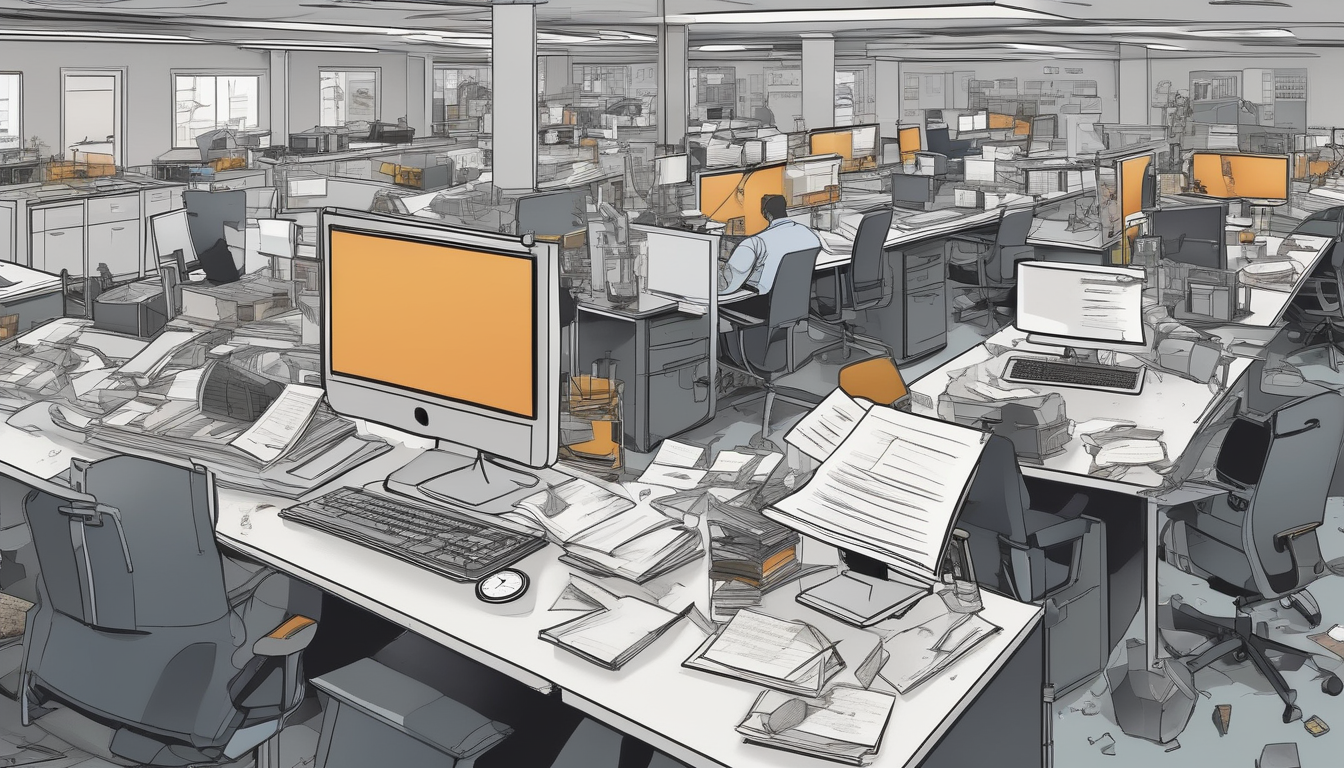
Challenges Posed by AI Integration
As we dive into the world of artificial intelligence, it’s crucial to acknowledge that while AI brings a multitude of benefits, it also introduces significant challenges that can’t be overlooked. One of the most pressing concerns is job displacement. With machines and algorithms taking over tasks traditionally performed by humans, many workers face the harsh reality of losing their jobs. This shift raises vital questions: How do we manage these transitions? What support systems are in place for those affected?
Furthermore, the ethical implications of AI cannot be ignored. In recruitment processes, AI systems are increasingly used to screen candidates, but this raises concerns about bias and fairness. If the algorithms are not designed with transparency in mind, they may inadvertently perpetuate existing inequalities. This situation begs the question: How can we ensure that AI enhances fairness rather than hinders it?
To illustrate the complexities of these challenges, consider the following table that outlines key concerns associated with AI integration:
| Challenge | Description |
|---|---|
| Job Displacement | Automation may lead to significant job losses in various sectors, particularly in routine tasks. |
| Ethical Concerns | AI systems can reflect and amplify biases present in training data, affecting hiring and promotion decisions. |
| Regulatory Frameworks | There is a lack of established regulations to manage the ethical deployment of AI technologies. |
In summary, while AI integration offers exciting possibilities, it also presents formidable challenges that need to be addressed. Balancing the benefits of AI with the potential risks is essential for creating a future where technology and human labor coexist harmoniously. As we move forward, fostering open discussions and implementing robust frameworks will be key to navigating this complex landscape.
Job Displacement Concerns
The rise of artificial intelligence (AI) has sparked a heated debate about job displacement. As machines become increasingly capable of performing tasks traditionally done by humans, many workers are left wondering: Will my job be next? This concern is not unfounded. According to a recent study, it’s estimated that up to 30% of jobs could be automated in the next two decades. But what does this really mean for the workforce?
While AI has the potential to enhance productivity and efficiency, it also poses significant challenges. For instance, certain sectors, such as manufacturing and customer service, are particularly vulnerable to automation. This shift could lead to large-scale job losses, impacting not only individuals but entire communities. How do we manage this transition? It’s crucial to have open discussions about the future of work and the measures needed to support affected workers.
To address these concerns, companies and governments must collaborate to create effective transition plans. This could involve:
- Providing retraining programs for displaced workers
- Encouraging industries to create new job opportunities
- Implementing safety nets for those who lose their jobs due to automation
Moreover, the ethical implications of AI in the workplace cannot be ignored. As algorithms take on more decision-making roles, there is a risk of bias in hiring and promotions. It’s essential to ensure that AI is implemented transparently and fairly, mitigating the risk of discrimination and reinforcing existing inequalities.
In conclusion, while the potential for job displacement due to AI is a serious concern, it also presents an opportunity for innovation in workforce development. By proactively addressing these challenges, we can create a future where humans and machines coexist, enhancing productivity without sacrificing livelihoods.
Ethical Implications of AI in Hiring
The integration of artificial intelligence in hiring processes has sparked a heated debate about ethics and fairness. As companies increasingly rely on AI algorithms to sift through resumes and assess candidates, the potential for bias and discrimination looms large. Imagine a world where a computer makes decisions about your career based on data, but that data is flawed or incomplete. This scenario raises critical questions: How do we ensure that AI systems are fair? What measures can be taken to prevent bias from creeping into hiring algorithms?
One of the primary concerns is that AI systems are only as good as the data they are trained on. If historical hiring data reflects biases—whether based on gender, race, or age—those biases can be perpetuated and even amplified by AI. For instance, if an AI tool is trained on a dataset that favors male candidates, it may inadvertently disadvantage equally qualified female applicants. This not only undermines the principles of equality and diversity but also risks alienating talented individuals who could contribute significantly to an organization.
To address these ethical implications, companies must prioritize transparency in their hiring algorithms. This involves not only understanding how the AI makes decisions but also being open about the data used to train these systems. A few strategies can help mitigate bias:
- Regular Audits: Conducting frequent audits of AI systems to identify and rectify any biases that may arise.
- Diverse Data Sets: Using diverse training datasets that reflect a wide range of backgrounds and experiences.
- Human Oversight: Ensuring that human recruiters are involved in the final decision-making process to provide context and judgment that AI may lack.
Ultimately, the goal should be to create a hiring process that not only leverages the power of AI but also upholds the values of fairness and inclusivity. By addressing these ethical implications head-on, organizations can build a more equitable future in hiring, where every candidate has a fair shot at success.
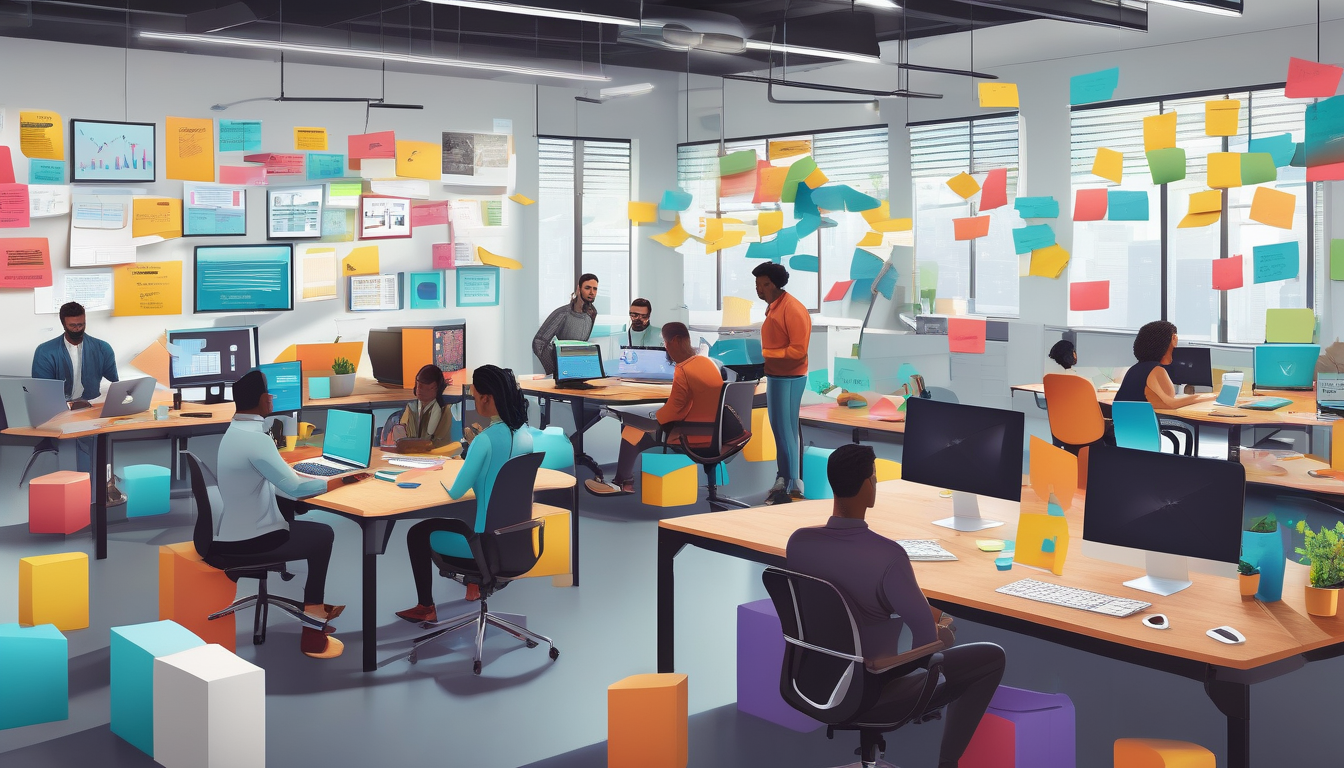
Strategies for Adapting to AI Changes
As the landscape of work evolves due to artificial intelligence, both employers and employees must embrace strategies to adapt effectively. The key to thriving in this new era lies in fostering a culture of continuous learning. By encouraging lifelong learning, organizations can equip their teams with the skills necessary to navigate AI tools and technologies. This not only enhances individual capabilities but also boosts overall productivity.
Moreover, collaboration between humans and AI is crucial. Rather than viewing AI as a replacement, organizations should develop frameworks that promote teamwork between employees and AI systems. This synergy can lead to increased innovation and efficiency, allowing employees to focus on more complex, creative tasks while AI handles repetitive processes. Imagine a workplace where AI manages data analysis, freeing up human minds for strategic thinking and problem-solving!
Employers can implement various initiatives to support this transition:
- Organizing regular training sessions on AI technologies.
- Offering mentorship programs that pair experienced workers with those eager to learn about AI.
- Creating a feedback loop where employees can share their experiences and suggestions regarding AI tools.
Additionally, it’s essential to establish a clear communication strategy. Keeping employees informed about how AI will impact their roles and the organization can alleviate fears and uncertainties. Transparency fosters trust and encourages a more proactive approach to adapting to change. By openly discussing the benefits and challenges of AI integration, companies can cultivate an environment where employees feel empowered to embrace new technologies.
In summary, adapting to AI changes requires a multifaceted approach. By promoting lifelong learning, fostering collaboration, and ensuring transparent communication, organizations can not only survive but thrive in the age of AI. After all, the future of work is not just about technology; it’s about how we leverage that technology to enhance human potential.
Promoting Lifelong Learning
In today’s rapidly evolving job market, lifelong learning is no longer just a buzzword; it’s a necessity. As artificial intelligence continues to reshape industries, the skills that were once in high demand may quickly become obsolete. So, how can we ensure that employees remain relevant and competitive? The answer lies in fostering a culture of continuous education and skill enhancement.
Organizations must take the initiative to create environments where learning is not only encouraged but also integrated into the daily workflow. This means providing access to various training programs, workshops, and online courses that cater to different learning styles. For instance, companies could offer:
- On-the-job training sessions
- Access to online learning platforms
- Mentorship programs pairing experienced employees with newcomers
Moreover, employees themselves need to embrace the idea of being lifelong learners. This involves actively seeking out opportunities to improve their skills and knowledge. Whether it’s through reading industry-related articles, attending webinars, or participating in professional networks, the goal is to stay ahead of the curve. The more adaptable an individual is, the better they’ll navigate the challenges posed by AI integration.
Interestingly, organizations that prioritize lifelong learning not only benefit their employees but also enhance their overall productivity and innovation. A well-trained workforce is more likely to leverage AI tools effectively, leading to improved outcomes. In fact, studies have shown that companies investing in continuous learning programs experience:
| Benefit | Percentage Increase |
|---|---|
| Employee Retention | 30% |
| Productivity | 25% |
| Innovation | 20% |
In conclusion, promoting lifelong learning is crucial for both employees and employers in the age of AI. By investing in education and training, we can prepare for the future, ensuring a workforce that is not only skilled but also resilient in the face of change. So, are you ready to embrace the learning journey?
Collaboration Between Humans and AI
In today’s fast-paced world, the idea of is not just a futuristic dream; it’s a reality that is reshaping industries. Imagine a workplace where humans and machines work side by side, each complementing the other’s strengths. This partnership can lead to enhanced productivity, creativity, and innovation. But how exactly do we harness the power of AI while keeping the human touch intact?
One of the most exciting aspects of this collaboration is the ability of AI to handle repetitive and mundane tasks, freeing up human employees to focus on more complex and creative endeavors. For instance, in customer service, AI chatbots can manage basic inquiries, allowing human agents to tackle more challenging issues that require empathy and critical thinking. This synergy not only boosts efficiency but also increases job satisfaction as employees engage in more meaningful work.
Moreover, fostering a culture of collaboration can lead to significant advancements in various sectors. Consider the healthcare industry, where AI assists doctors in diagnosing diseases more accurately by analyzing vast amounts of data. This not only improves patient outcomes but also allows healthcare professionals to spend more time with their patients, enhancing the overall care experience.
To effectively implement this collaboration, organizations should focus on the following strategies:
- Training Programs: Invest in training programs that equip employees with the skills to work alongside AI technologies. This not only boosts confidence but also ensures that workers can leverage AI tools effectively.
- Open Communication: Encourage open communication between teams to discuss how AI can assist in their specific roles, fostering a sense of ownership and adaptability.
- Feedback Loops: Establish feedback loops where employees can share their experiences and suggest improvements, creating a dynamic and responsive work environment.
In essence, the collaboration between humans and AI is not about replacing jobs but rather enhancing them. By embracing this partnership, organizations can create a more resilient workforce that is ready to tackle the challenges of tomorrow. The future is here, and it’s all about working together!
Frequently Asked Questions
- How is AI affecting job markets today?
AI is reshaping job markets by creating new job categories and enhancing productivity. While some roles may become obsolete, many new opportunities are emerging, especially in tech-driven sectors.
- What types of jobs are being created due to AI?
New job roles are popping up in various fields, including data analysis, telemedicine, and creative industries. These positions often require unique skill sets that blend technology with traditional roles.
- What challenges do workers face with AI integration?
Workers may face job displacement in certain sectors due to automation. Additionally, ethical concerns regarding bias in AI-driven hiring processes present significant challenges that need addressing.
- How can workers prepare for changes brought by AI?
Engaging in reskilling and upskilling initiatives is crucial. Lifelong learning and adapting to new technologies will help workers remain competitive in a rapidly evolving job landscape.
- What role does collaboration between humans and AI play?
Collaboration enhances productivity and innovation. By developing frameworks where humans and AI work together, organizations can create a more resilient workforce capable of tackling complex challenges.
